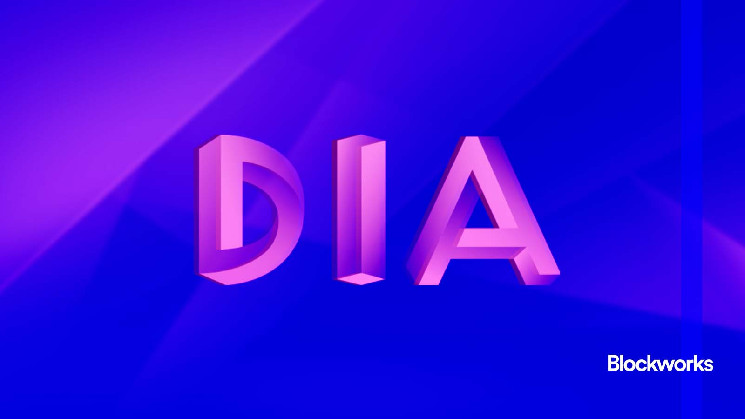DIA has launched the testnet for Lumina, the new modular oracle infrastructure aimed at improving transparency, scalability and integration flexibility. Designed to address common issues with existing oracles, Lumina enables data aggregation, verification, and delivery across blockchains.
The architecture stands out from other Oracle solutions such as Chainlink and API3, given its support for multiple messaging protocols, compatibility with non-EVM chains, and extensive data traceability.
Previously, access to the origin and flow of Oracle data was often opaque, but Lumina provides complete visibility into the entire process, said Zygis Marazas, DIA’s head of product.
Read more: Chainlink brings data feeds to Bitcoin L2 Spiderchain
“Users can clearly see the entire data journey, from source to final price calculation,” Marazas told Blockworks. This approach aims to build trust in the reliability and accuracy of data.
The testnet, which went live today, will limit participation. However, the mainnet is scheduled for release in the first quarter of 2025 and will function as a completely permissionless network. In addition to nodes, new chains and assets requiring oracle services can be connected without direct involvement of the DIA team. This eliminates the need for manual onboarding processes.
“You can set up your own oracles if you wish, completely without permission,” Marazas explained. This functionality is expected to appeal to developers working on emerging rollups and specialized blockchain ecosystems, where speed and autonomy are critical.
This functionality should allow the long tail of assets to make their way into DeFi, Aiham Jaabari told Blockworks. Jaabari is co-founder of Silo Finance, which uses DIA oracles.
“Very few Oracle providers offer data feeds beyond the blue chips, so that’s why we’re quite excited about Lumina,” Jaabari said. “Technically, you can actually create an oracle on one without permission [layer-2] for absolutely every symbolic possession.”
Lumina’s architecture is designed to integrate a wide variety of data sources. By merging data from multiple sources, including blockchain networks and external APIs, Lumina ensures broad coverage and accuracy.
“You can get data from any source – offchain or onchain – from the hundreds of feeds that exist in the market today,” says Marazas.
To increase scalability, Lumina uses an OP Stack-based rollup called Lasernet. For data availability, Lumina uses Celestia, making the rollup an optimium: the optimistic rollup equivalent of a validium.
Read more: So your layer 2 is ‘secured by Ethereum’ – what does that mean?
Marazas noted that the team was impressed with Celestia’s roadmap to one-gigabyte blocks, and believes the economies of scale outweigh the small risk introduced by adding a dependency, a view that aligns with the broader modular trend .
While Lumina is optimized for Ethereum rollups, it is also designed to support non-EVM ecosystems such as Cosmos and Move-based chains. It uses Hyperlane as a cross-chain messaging protocol, but can work with other standards if necessary.
Lumina’s flexibility is further expanded with support for both push and pull data delivery models, allowing users to choose the approach that best suits their needs. “Some customers prefer it [a] a pull-based approach, where they can get prices on demand, but there are other cases where push-based [updates] can be more efficient,” he added.
Ultimately, it is the flexibility that Silo’s Jaabari sees as a selling point. “Controlling the oracle is just as important as the feed itself, because there is no one methodology that fits all assets,” he said.
Jaabari is also a fan of the layer 2 strategy, calling it “the cheapest way to process the data and make it available.”
Decentralization is an important part of Lumina’s roadmap. While the testnet will initially rely on whitelisted data feeders, DIA plans to gradually open up participation to everyone in 2025, introducing strike and slash mechanisms to ensure data accuracy.
“The vision of our protocol is that it will ultimately work without the core team involved,” Marazas said.

